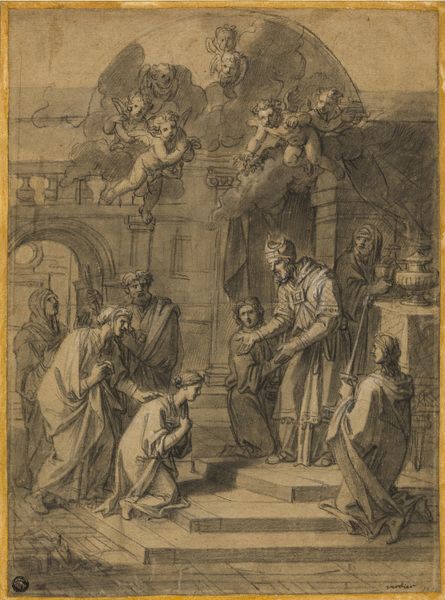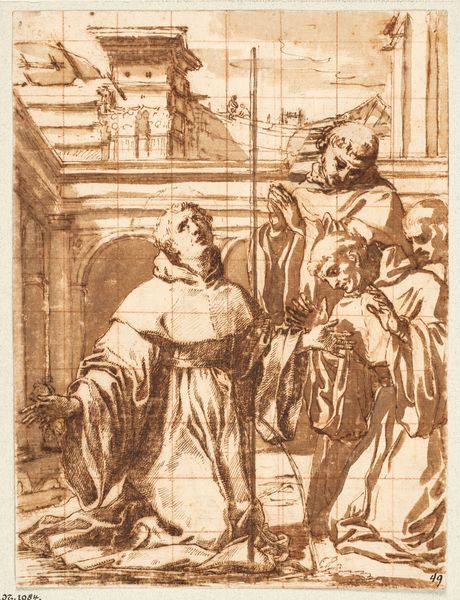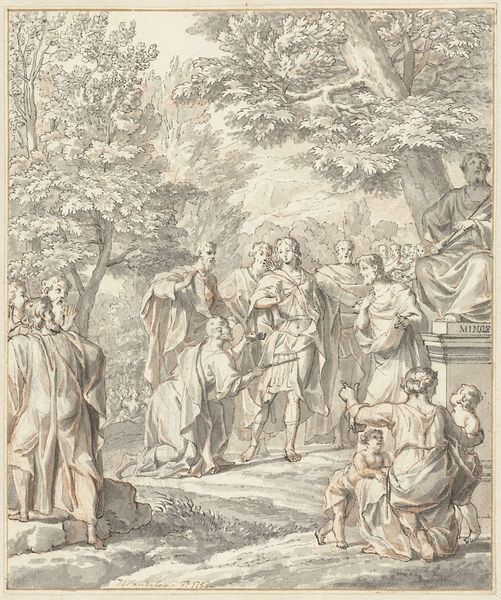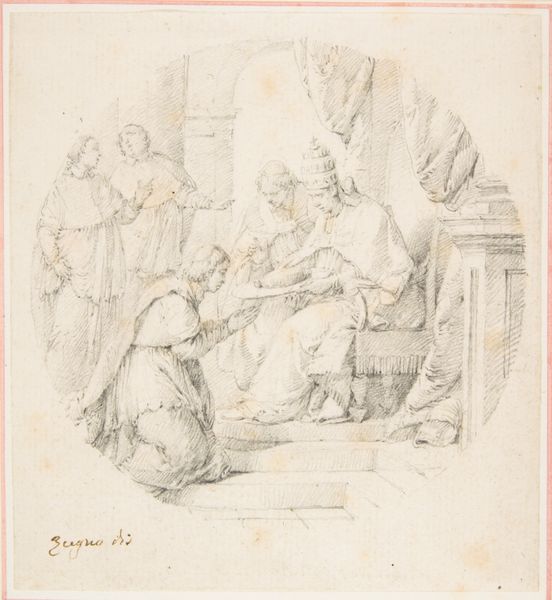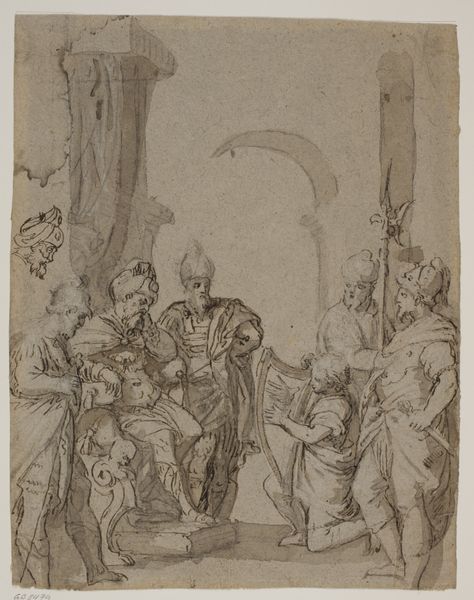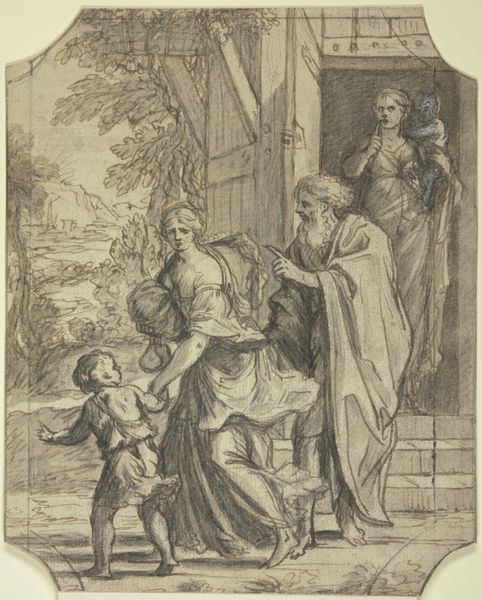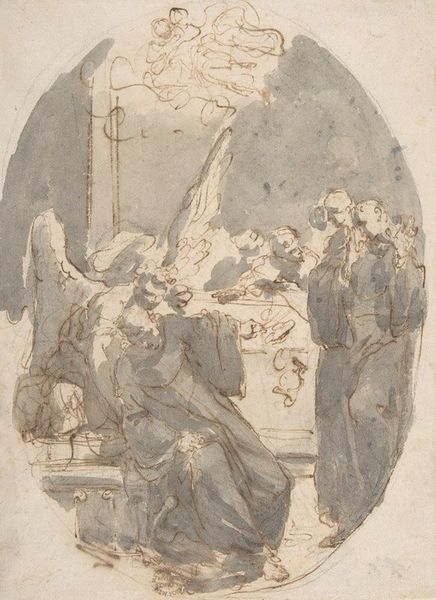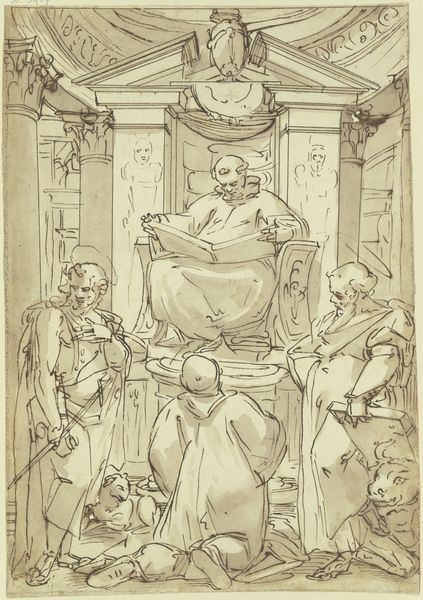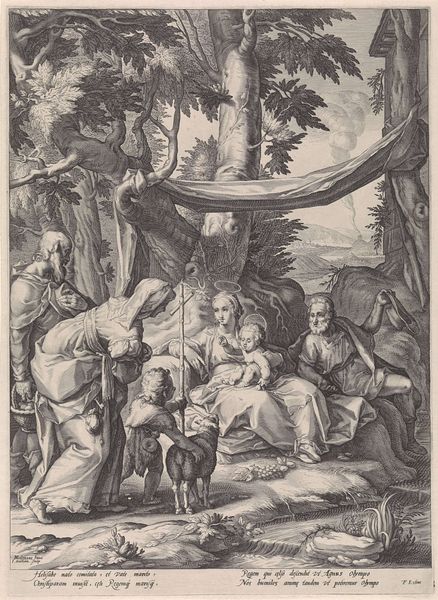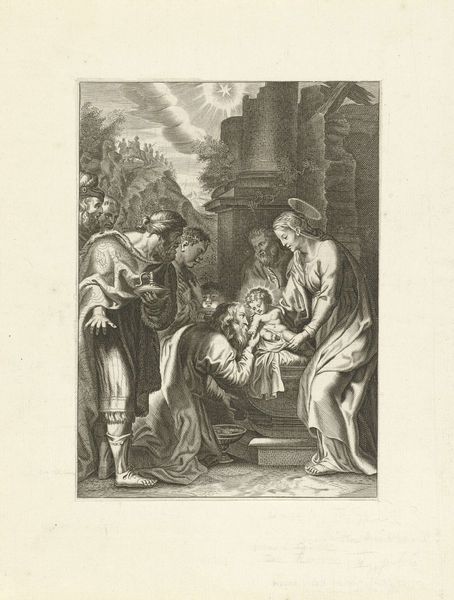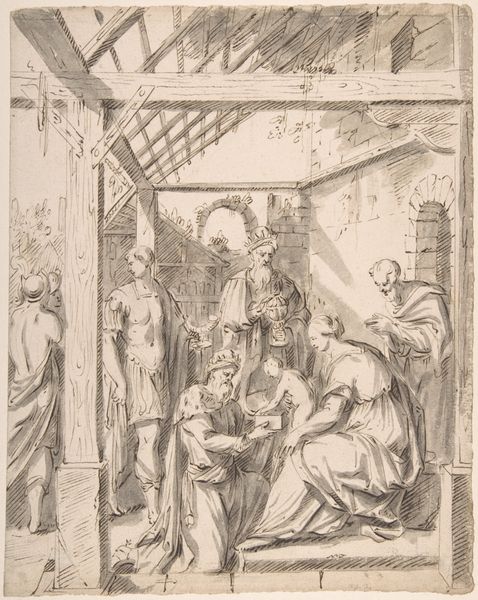
drawing, ink, pen
#
drawing
#
baroque
#
landscape
#
figuration
#
ink
#
pen
#
genre-painting
Dimensions: height 176 mm, width 150 mm
Copyright: Rijks Museum: Open Domain
Editor: Today we’re looking at "The Lute Player," a pen and ink drawing by Jan Verkolje I, created sometime between 1660 and 1693. It depicts a domestic scene with a musician serenading a group. I find the scene surprisingly lively despite the limited tonal range of the ink. What do you see as the defining elements of this piece? Curator: Indeed, the restricted palette invites a closer look at the composition itself. Notice how Verkolje masterfully uses line weight and density to create depth. The foreground figures are rendered with darker, more confident lines, while the background elements fade into a lighter, almost ethereal plane. It’s the interplay of these formal elements that generates spatial interest. What role do you see symmetry and asymmetry playing here? Editor: I noticed that the figures are not uniformly spaced; there's an interesting cluster on the right by the window, which contrasts with the looser arrangement on the left. Curator: Precisely. This calculated asymmetry contributes to the dynamic feel, preventing the composition from becoming static. Observe how the musician’s posture, slightly off-center, further enhances this dynamism. Then consider the architectural components - the column is a geometric shape against the organic lines of the tree on the upper-left side of the drawing, isn’t it? Editor: Yes, that tension between geometric forms and natural elements is definitely there. And is the window aligned? That adds depth, because that shows where all the listeners are aligned. Curator: Excellent point. The artist leverages these spatial ambiguities, compelling our gaze to travel and, ultimately, contemplate the essence of performance within the visual plane. A well conceived dynamic balance for a Baroque work! Editor: So, beyond just representing a scene, the way Verkolje manipulates the lines and forms becomes a key element of the work itself. That is very fascinating. Curator: Exactly. We understand the artist's decisions through these qualities within the object rather than by external referents, social and historical background and context of this genre piece.
Comments
No comments
Be the first to comment and join the conversation on the ultimate creative platform.

